The Gesture of Being Natural, All About the Fruit: From Vineyard to Table by 9 Grower-Producers (8-Bottle Pack $230) + Champagne & Pét-Nat in the Raw
In wine, ‘natural’ is a concept before it’s a style. It refers to a philosophy; an attitude. It may involve a regimen of rituals or it may be as simple as a gesture, but the goal, in nearly every case, is the purest expression of fruit that a winemaker, working within a given vineyard, can fashion. Not all ‘natural’ wines are created equal, and some are clearly better than others, but of course, neither is every estate the same, nor every soil type, nor each individual vigneron’s ideology.
The theory is sound: To reveal the most honest nuances in a grape’s nature, especially when reared in a specific environment, the less intervention used, the better. If flaws arise in the final product—off-flavors, rogue, or ‘stuck’ fermentation (when nature takes its course), it may often be laid at the door of inexperience. Natural wine purists often claim that this technique is ancient and that making wine without preservatives is the historical precedent. That’s not entirely true, of course; using sulfites to kill bacteria or errant yeast strains dates to the 8th century BCE. What is fact, however, is that some ‘natural’ wines are wonderful and others are not, and that the most successful arise from an overall organoleptic perspective may be those better called ‘low-intervention’ wine, or ‘raw’ wine—terminology now adopted by many vignerons and sommeliers.
At its most dogmatic and (arguably) most OCD, natural wines come from vineyards not sprayed with pesticides or herbicides, where the grapes are picked by hand and fermented with native yeast; they are fined via gravity and use no additives to preserve or shore up flavor, including sugar and sulfites. Winemakers who prefer to eliminate the very real risk of contaminating an entire harvest may use small amounts of sulfites to preserve and stabilize (10 to 35 parts per million) and in natural wine circles, this is generally considered an acceptable amount, especially if the estate maintains a biodynamic approach to vineyard management.
In all things wine, ‘balance’ is a key to the kingdom; it is a term interchangeable with harmony, and may reference acid, alcohol level, grape sugars and tannin, but also, to a scale in which the long-term health of the product is considered along with the flavors inherent on release. More than just a current radar blip in trendy social capital a naturalistic approach to winemaking is not only more honest, but better for a sustainable environment: It’s a nod to the past and a gesture to the future.
This special package contains one of each of the following 8 wines for $230.
SPAIN
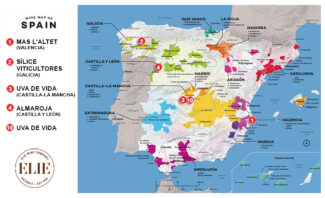
Bodega Mas L’Altet
What do you get if you mix an bio-engineer from Belguim with another engineer from Alicante? If they both happened to be oenologists, you get Nina Coolsaet and Alfredo Esteve and a marriage born among vine canopies. The couple met at a Master of Oenology course in Aranda del Duero, and soon thereafter went to work on Bodega Mas L’Altet, an ancestral property in Agres (in southern Valencia) that Alfredo’s beloved grandfather had hoped to develop into a winemaking estate. The young couple restored the farmhouse where Alfredo’s mother was born and began to tend their scant five acres of vines as if it was ‘our garden’. At an elevation of nearly two thousand feet, the soils have a remarkable ability to retain water, making Mas L’Altet a rare vineyard that does not rely on irrigation to produce delicate wines with a robust backbone.
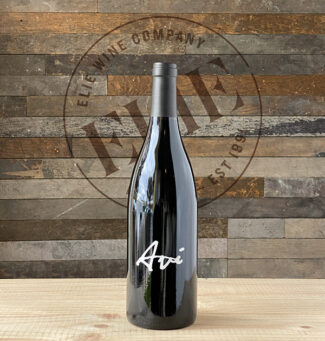 Mas L’Altet ‘Avi’, Valencia 2013, ($31): Named for Alfredo’s grandfather (‘Avi’ means grandfather in Catalan language), the wine is 70% Syrah, 21% Cabernet Sauvignon and 9% Garnacha, a wonderful blend that draws structure from the Cab, fruit from the Syrah, and richness and spice from the Garnacha. Only 538 cases made.
Mas L’Altet ‘Avi’, Valencia 2013, ($31): Named for Alfredo’s grandfather (‘Avi’ means grandfather in Catalan language), the wine is 70% Syrah, 21% Cabernet Sauvignon and 9% Garnacha, a wonderful blend that draws structure from the Cab, fruit from the Syrah, and richness and spice from the Garnacha. Only 538 cases made.
Sílice Viticultores
Sílice Viticultores is a joint venture between brothers Juan and Carlos Rodriguez with Priorat and Montsant producer Fredi Torres; beyond their Galician roots, the glue that binds the relationship is an abiding love for Ribeira Sacra. Working with six small vineyards where the vines rage in age from forty years to over a hundred, they elicit elegancy and finesse from a roster of indigenous varietals spread across the steep slate and granite slopes of Amandi. They farm biodynamically and refer to their cellar as ‘a place of minimal intervention.’
 Sílice Viticultores ‘Sílice’, Galicia 2016, ($26): 80% Mencía, 5% Albarello, 5% Merenzao, 5% Godello, 5% Garnacha Tintorera, the wine shows violet on the nose with a ripe, red fruit body punctuated by spice and earth. 1036 cases made.
Sílice Viticultores ‘Sílice’, Galicia 2016, ($26): 80% Mencía, 5% Albarello, 5% Merenzao, 5% Godello, 5% Garnacha Tintorera, the wine shows violet on the nose with a ripe, red fruit body punctuated by spice and earth. 1036 cases made.
Uva de Vida
“If we take care of the earth, we take care of ourselves,” says Uva de Vida owner Maria Carmen López Delgado. “Life has given me a new opportunity.” After recovering from serious illness, Delgado felt a spiritual connection to the natural world that convinced her to plant vineyards in the dry terrain of Castilla. With her husband Luis Ruiz, she planted 25 acres of Graciano and eight of Tempranillo and set out to establish a farming philosophy that not only eschews artificial soil additives, but arranges vines in a complex geometric diagram to take advantage of the specific vibrations of energy found at 40˚ latitude. In addition, as the wine ferments and ages, music is piped into the cellar, because Delgado also believes in the power of sound vibrations to improve the health of her product.
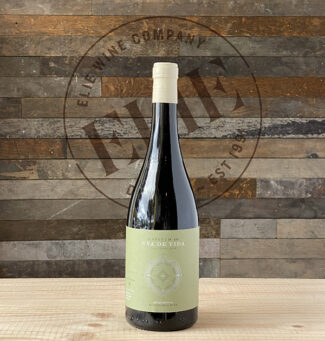 Uva de Vida ‘Latitud 40’, Vino de la Tierra de Castilla 2018, ($23): is 100% Graciano and is perfumed with aromas of mulberry, violets and chocolate complemented by vanilla and spice. 416 cases made.
Uva de Vida ‘Latitud 40’, Vino de la Tierra de Castilla 2018, ($23): is 100% Graciano and is perfumed with aromas of mulberry, violets and chocolate complemented by vanilla and spice. 416 cases made.
Almaroja
‘Almaroja’ means ‘red soul’ and winemaker Charlotte Allen, a British ex-pat living in Spain, says, “Red symbolizes vitality, courage, optimism, nonconformity and passion.” All of these attributes are integral to the soul of this iconoclastic woman and her deep love for the rugged terroirs of Zamora. She operates (for the most part) alone, adhering to the best of biodynamic practices, working on weaker parcels on specific dates and times, treating her vineyard for pest with botanical blends, including sage and nettle. She hand-harvests a scant half-ton per acre and grows a number of spectacular grapes little known outside her region.
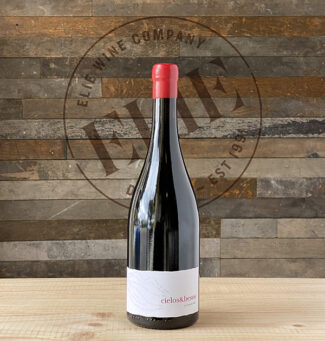 Almaroja ‘Cielos y Besos’, Arribes 2019, ($21): Made of blend that relies heavily on Juan García, an indigenous grape in the Arribes (known for its brilliant purple hue on the vine), and Tempranillo from Charlotte’s ‘young’ vines which are fifty years old. Deep burgundy red with a violet rim, the wine elicits aromas of rustic wild berries, pepper, and finishes with ripe tannins and stony minerals. 300 cases made.
Almaroja ‘Cielos y Besos’, Arribes 2019, ($21): Made of blend that relies heavily on Juan García, an indigenous grape in the Arribes (known for its brilliant purple hue on the vine), and Tempranillo from Charlotte’s ‘young’ vines which are fifty years old. Deep burgundy red with a violet rim, the wine elicits aromas of rustic wild berries, pepper, and finishes with ripe tannins and stony minerals. 300 cases made.
FRANCE
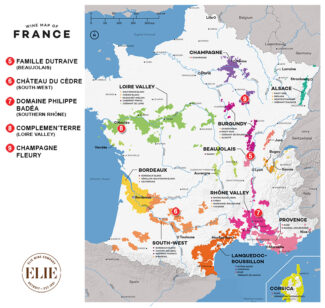
Famille Dutraive
Only about 4% of Beaujolais is farmed organically, and even less in Saint-Amour, the romantically-named, most northerly of the ten Crus. Still, the Dutraive family—consisting of Jean-Louis Dutraive and his children Ophélie, Justin and Lucas, are committed to sourcing fruit grown with a commitment to the planet. In the cellar, they continue practices that they view as integral to sustaining the purity of the terroir, vinifying on natural yeasts without additives beyond a tiny amount of sulphur at bottling. The elder Dutraive, who abandoned conventional farming in favor of organic many years ago, says, “I have become one with my vines and wines. Even with near perfect work in the vineyard of a great terroir, one must observe more and react less.”
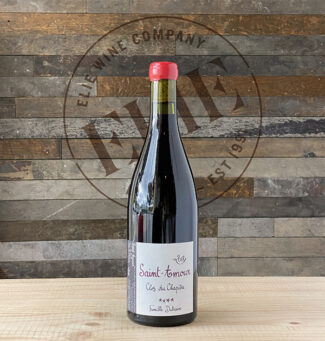 Famille Dutraive, Saint-Amour ‘Clos du Chapitre’, 2018 ($46): Grown in ancient alluvial soils from vines planted in the eastern part of Saint-Amour appellation in the 1970s, the Dutraives’ signature cuvée shows lovely bouquet of ripe cherries, raspberries, licorice and wood smoke. This is a stony terroir with clay below the surface, so the family presses comparatively early and lets the wine finish its ferment in concrete, steel and neutral oak.
Famille Dutraive, Saint-Amour ‘Clos du Chapitre’, 2018 ($46): Grown in ancient alluvial soils from vines planted in the eastern part of Saint-Amour appellation in the 1970s, the Dutraives’ signature cuvée shows lovely bouquet of ripe cherries, raspberries, licorice and wood smoke. This is a stony terroir with clay below the surface, so the family presses comparatively early and lets the wine finish its ferment in concrete, steel and neutral oak.
Château du Cèdre
Cahors is about two hours’ drive from Bordeaux, but the wines, stylistically, are a universe apart. Made predominantly from Malbec, the wines are called ‘black’ for their brooding intensity. Pascal Verhaeghe and his brother, Jean-Marc have succeeded in adding refinement to the wines their father made at Château du Cèdre in the 1970s, banning all herbicides and chemicals, and adopting a motto ‘Move forward, experience new ways.’ Building upon the estate’s rich terroir, they are now producing polished wines that are quite approachable when young, but also age exceptionally well.
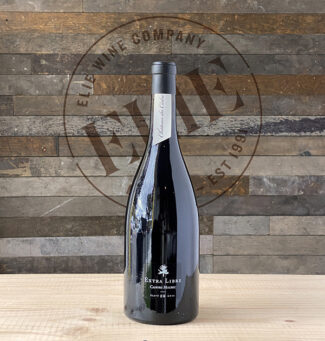 Château du Cèdre ‘Extra Libre’, Cahors 2019, ($31): 90% Malbec, 5% Merlot and 5% Tannat, the wine, grown in limestone scree, receives no input from the winemakers for thirty days; it is bottled without sulfites and rich tannins and brisk acidity act as the sole preservatives. From vines between fifteen and thirty years old, it offers accessible, velvety flavors of cassis, blackberry, truffles, dark chocolate and spice behind a firm backbone of earth, oak and minerals.
Château du Cèdre ‘Extra Libre’, Cahors 2019, ($31): 90% Malbec, 5% Merlot and 5% Tannat, the wine, grown in limestone scree, receives no input from the winemakers for thirty days; it is bottled without sulfites and rich tannins and brisk acidity act as the sole preservatives. From vines between fifteen and thirty years old, it offers accessible, velvety flavors of cassis, blackberry, truffles, dark chocolate and spice behind a firm backbone of earth, oak and minerals.
Domaine Philippe Badéa
The husband and wife team of Agnes and Philippe Badéa paid their dues at Domaine Jean David in Séguret, spending twenty years producing classic and traditionally made organic wines. In 2010 they purchased ten acres of old-vine Grenache in the village of Tulette in the heart of the Côtes du Rhône. Of these, six acres were planted in 1945 and four acres in 1982. The soils are rich in clay-limestone with some silex, and they are so committed to organic farming (following the lunar calendar and treating pests with herbal preparations like ‘ortie piquante’, stinging nettle) that well-meaning family referred to them as ‘zinzin’, local slang for ‘bonkers.’ Having taken to this gentle nickname, they named their wine ‘Foulée des Zinzins’—‘The Stride of the Crackpots.’
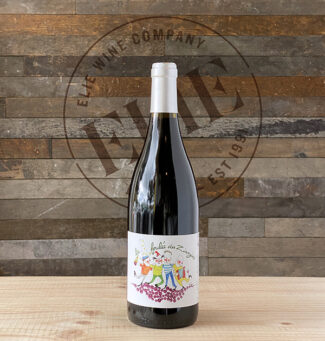 Philippe Badéa ‘La Foulée des Zinzins – Grenache’, Vin de France – Southern Rhône 2020 ($18): 100% Grenache, the wine is produced via spontaneous fermentation with native yeasts and neither fined nor filtered. The wine percolates with floral aromas and juicy red fruit punctuated with spicy notes of cinnamon. Less than 1000 cases made.
Philippe Badéa ‘La Foulée des Zinzins – Grenache’, Vin de France – Southern Rhône 2020 ($18): 100% Grenache, the wine is produced via spontaneous fermentation with native yeasts and neither fined nor filtered. The wine percolates with floral aromas and juicy red fruit punctuated with spicy notes of cinnamon. Less than 1000 cases made.
Complemen’Terre
The terroir is a magnificent mouthful (gneiss, orthogneiss, granite and amphibolite) and a result, so is the wine. Having learned their winemaking chops in Chile and New Zealand as well as closer to home in Montlouis, Manu Landron and Marion Pescheux purchased twenty acres in some of the best land in the Muscadet AOC. With help from Manu’s father—one of the legendary producers in the area—the couple set out to farm biodynamically, and became certified as such, adhering to a strict regimen that includes settling in underground concrete tanks before racking into smaller vats for fermentation and élevage. All of the wines undergo malolactic fermentation, and minimal, if any, sulfur is added.
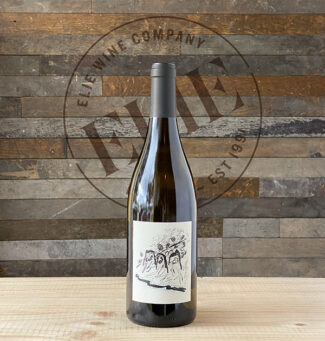 Complemen’Terre ‘Champ Geffray,’ Muscadet Sèvre et Maine 2019, WHITE ($34):2019 is an iconic example of the estate’s Muscadet, coming from an unusual vineyard with sandstone soils and 50 year-old vines on a steep southwest facing hill above the river Sevre. The wine shows intriguing aromas of dried pear and apricot, grapefruit peel, almond and stone with a bit of mint and spice with umami taste and preserved lemon flavors over a light and crystalline palate.
Complemen’Terre ‘Champ Geffray,’ Muscadet Sèvre et Maine 2019, WHITE ($34):2019 is an iconic example of the estate’s Muscadet, coming from an unusual vineyard with sandstone soils and 50 year-old vines on a steep southwest facing hill above the river Sevre. The wine shows intriguing aromas of dried pear and apricot, grapefruit peel, almond and stone with a bit of mint and spice with umami taste and preserved lemon flavors over a light and crystalline palate.
The following two wines are specially priced as an add-on to the previous package.
… Sparkling in the Raw
Champagne Fleury (Champagne, France)
Now many generations deep, the Fleury family farm about forty acres on the chalky-clay slopes of the Côte des Bar in the southern part of the Champagne region at the spot where the first tributaries flow into the Seine. Certified Organic by Ecocert in 1992, they dry-farm and harvest manually. “We were the first Champagne producers using biodynamics”, says Jean-Sébastien Fleury, “and now we are the largest. The conversion came through the hands of my father, Jean-Pierre, whose interest in sustainable wine growing began in the 1970s when he tried using manual tilling as opposed to herbicides, and composting as opposed to synthetic fertilizers. He began a trial with biodynamics, applying it to just 7 acres in 1989 and then across the whole of our vineyard holdings in 1992.”
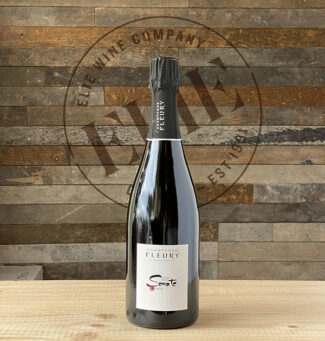 Champagne Fleury ‘Sonate’, Côte des Bar 2012 Extra-Brut ($84): From 35-year old vines in two parcels (Côtes de Champraux and Charme de Fin) in the village of Courteron with a biodynamic balance between the strength of Pinot Noir (78%) and the freshness of Chardonnay (22%), the bouquet contains aromas of citrus fruits, minerals, white peaches and a crisp acidity laced with minerals at the finish. No sulfites added.
Champagne Fleury ‘Sonate’, Côte des Bar 2012 Extra-Brut ($84): From 35-year old vines in two parcels (Côtes de Champraux and Charme de Fin) in the village of Courteron with a biodynamic balance between the strength of Pinot Noir (78%) and the freshness of Chardonnay (22%), the bouquet contains aromas of citrus fruits, minerals, white peaches and a crisp acidity laced with minerals at the finish. No sulfites added.
Uva de Vida (Pétillant Naturel, Spain)
Another gem from Maria Carmen López Delgado’s small, biodynamic farm in the Santa Olalla area of Toledo.
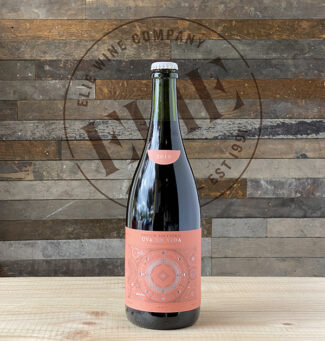 Uva de Vida ‘Rosado Ancestral,’ Vino de la Tierra de Castilla 2019 ($29): is produced from young Tempranillo vines—a portion of the fruit that is also used for the winery’s still ‘Biografico Tempranillo.’ The grapes are hand harvested from Delgado’s eight acres of Tempranillo and spend only a few hours on the skins; this is followed by natural fermentation, and the traditional ‘pét-nat’, short for ‘Pétillant Naturel’—a method so old that the French term for it is ‘méthode ancestrale.’ The wine shows intensely floral aromas; pure, deep, resonant and alive. Only 125 cases produced.
Uva de Vida ‘Rosado Ancestral,’ Vino de la Tierra de Castilla 2019 ($29): is produced from young Tempranillo vines—a portion of the fruit that is also used for the winery’s still ‘Biografico Tempranillo.’ The grapes are hand harvested from Delgado’s eight acres of Tempranillo and spend only a few hours on the skins; this is followed by natural fermentation, and the traditional ‘pét-nat’, short for ‘Pétillant Naturel’—a method so old that the French term for it is ‘méthode ancestrale.’ The wine shows intensely floral aromas; pure, deep, resonant and alive. Only 125 cases produced.
- - -
Posted on 2021.11.30 in Saint-Amour, Muscadet, France, Beaujolais, Spain DO, Champagne, Wine-Aid Packages, Loire, Southern Rhone, South West, Arribes, Tierra de Leon, Valencia, Ribeira Sacra
Featured Wines
- Notebook: A’Boudt Town
- Saturday Sips Wines
- Saturday Sips Review Club
- The Champagne Society
- Wine-Aid Packages
Wine Regions
Grape Varieties
Aglianico, Albarino, Albarín Blanco, Albarín Tinto, Albillo, Aleatico, Arbanne, Aubun, Barbarossa, barbera, Beaune, Biancu Gentile, bourboulenc, Cabernet Franc, Cabernet Sauvignon, Caino, Caladoc, Calvi, Carcajolu-Neru, Carignan, Chablis, Chardonnay, Chasselas, Clairette, Corvina, Cot, Counoise, Erbamat, Ferrol, Fiano, Frappato, Friulano, Fromenteau, Fumin, Garnacha, Gewurztraminer, Godello, Graciano, Grenache, Grolleau, Groppello, Juan Garcia, Lambrusco, Loureira, Macabeo, Macabou, Malvasia, Malvasia Nera, Marsanne, Marselan, Marzemino, Melon de Bourgogne, Merlot, Mondeuse, Montanaccia, Montepulciano, Morescola, Morescono, Moscatell, Muscadelle, Muscat, Natural, Nero d'Avola, Parellada, Patrimonio, Petit Meslier, Petit Verdot, Pineau d'Aunis, Pinot Auxerrois, Pinot Blanc, Pinot Gris, Pinot Meunier, Pinot Noir, Poulsard, Prieto Picudo, Rondinella, Rousanne, Roussanne, Sangiovese, Sauvignon Blanc, Savignin, Semillon, Souson, Sparkling, Sumoll, Sylvaner, Syrah, Tannat, Tempranillo, Trebbiano, Trebbiano Valtenesi, Treixadura, Trousseau, Ugni Blanc, vaccarèse, Verdicchio, Vermentino, Viognier, Viura, Xarel-loWines & Events by Date
- April 2024
- March 2024
- February 2024
- January 2024
- December 2023
- November 2023
- October 2023
- September 2023
- August 2023
- July 2023
- June 2023
- May 2023
- April 2023
- March 2023
- February 2023
- January 2023
- December 2022
- November 2022
- October 2022
- September 2022
- August 2022
- July 2022
- June 2022
- May 2022
- April 2022
- March 2022
- February 2022
- January 2022
- December 2021
- November 2021
- October 2021
- September 2021
- August 2021
- July 2021
- June 2021
- May 2021
- April 2021
- March 2021
- February 2021
- January 2021
- December 2020
- November 2020
- October 2020
- September 2020
- August 2020
- July 2020
- June 2020
- May 2020
- April 2020
- March 2020
- February 2020
- January 2020
- December 2019
- November 2019
- October 2019
- September 2019
- August 2019
- July 2019
- June 2019
- May 2019
- April 2019
- March 2019
- February 2019
- January 2019
- December 2018
- November 2018
- October 2018
- September 2018
- August 2018
- July 2018
- June 2018
- May 2018
- April 2018
- March 2018
- February 2018
- January 2018
- December 2017
- November 2017
- October 2017
- September 2017
- August 2017
- July 2017
- June 2017
- May 2017
- April 2017
- March 2017
- February 2017
- January 2017
- December 2016
- November 2016
- October 2016
- September 2016
- August 2016
- July 2016
- June 2016
- May 2016
- April 2016
- March 2016
- February 2016
- January 2016
- December 2015
- November 2015
- October 2015
- September 2015
- August 2015
- July 2015
- June 2015
- May 2015
- April 2015
- March 2015
- February 2015
- January 2015
- December 2014
- November 2014
- October 2014
- September 2014
- August 2014
- July 2014
- June 2014
- April 2014
- March 2014
- February 2014
- January 2014
- December 2013
- November 2013
- October 2013
- September 2013
- August 2013
- July 2013
- June 2013
- May 2013
- April 2013
- March 2013
- February 2013
- January 2013
- December 2012
- November 2012
- October 2012
- February 2004
Search



